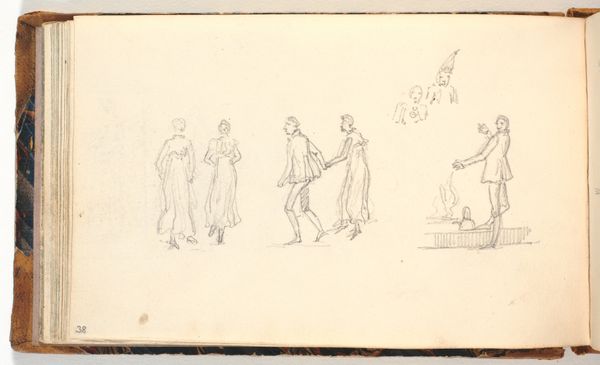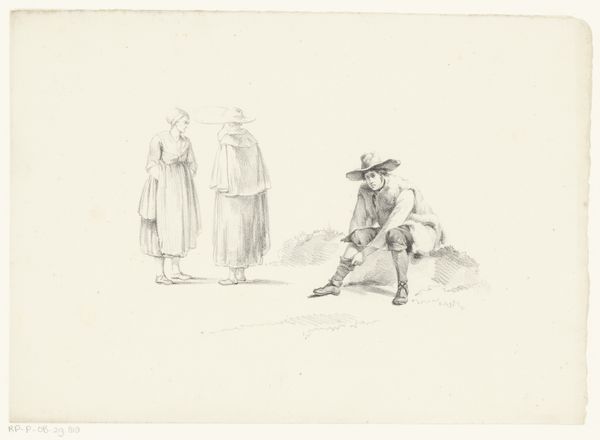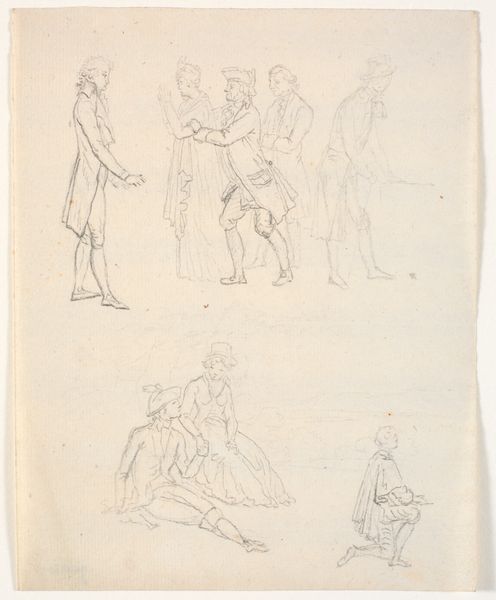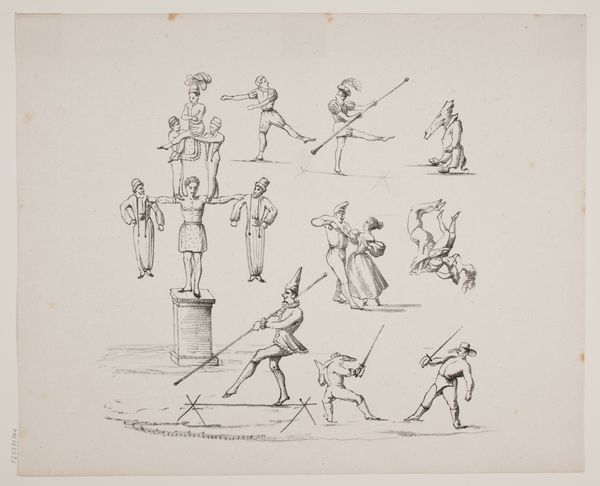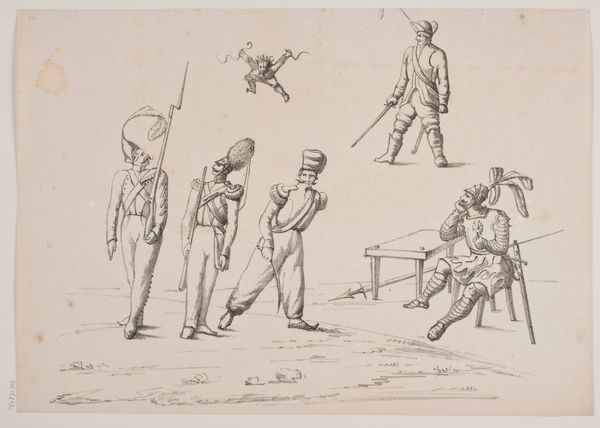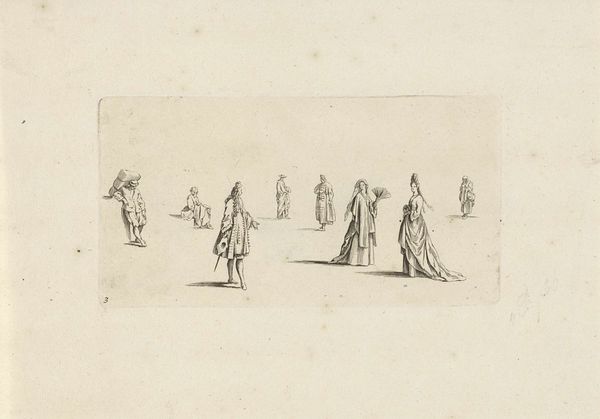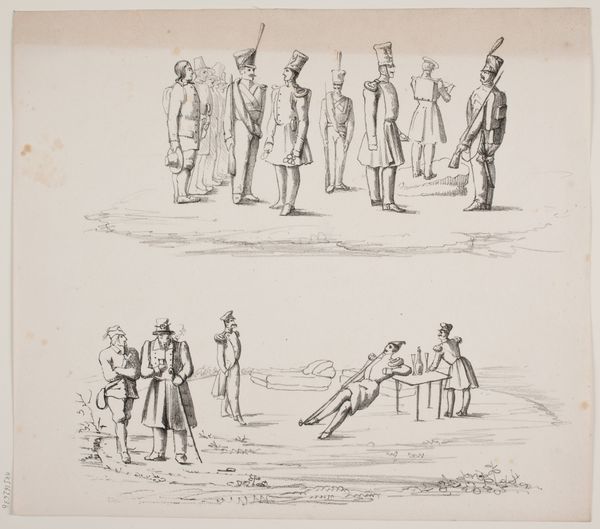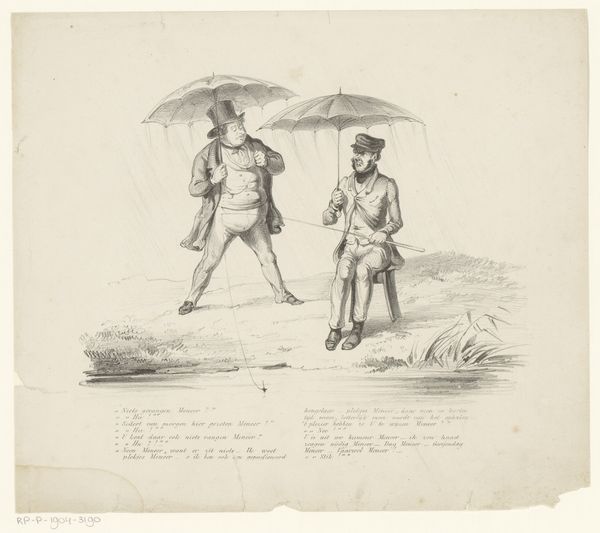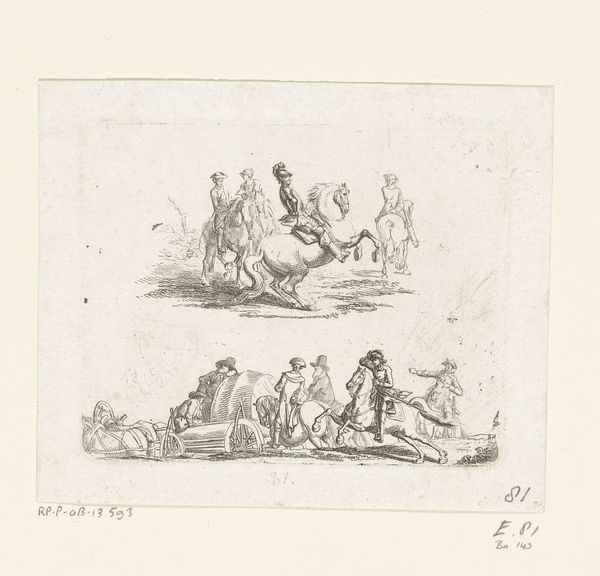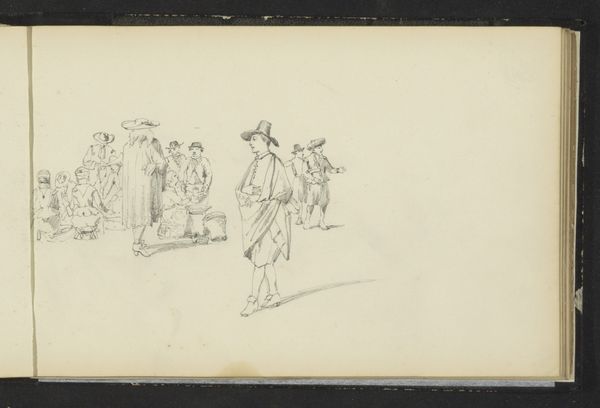
drawing, lithograph, print, etching, ink
#
drawing
#
ink drawing
#
lithograph
# print
#
etching
#
etching
#
figuration
#
ink
#
genre-painting
#
history-painting
#
academic-art
Dimensions: 261 mm (height) x 331 mm (width) (bladmaal)
Editor: This is "Prøveblad med rytter og folk til fods," or "Test Sheet with Rider and People on Foot" by N.B. Krossing, dating from 1795 to 1854. It seems to be a combination of ink, etching, and lithography. What strikes me most is its sketch-like quality; the figures seem more like studies than a finished piece. What can you tell me about it? Curator: This "test sheet" invites us to consider the artistic labor involved in creating finished works. Krossing experiments with different printing techniques and figure studies. Note the contrasts in dress – the stark class differences represented through their clothes and bearing. How do the materials themselves contribute to this portrayal of social hierarchy? Editor: So, you're saying that the work isn’t just *of* different classes, but the *way* it’s made, the printmaking processes used, adds to the statement about social standing? Curator: Precisely. Consider the accessibility of printmaking at the time. It allows for the wider distribution of images, potentially challenging aristocratic notions of singular, original artworks. Look closely at the lines – are they consistently rendered across each figure? How does the medium affect how we perceive them? Editor: I see what you mean! The etching feels a bit more formal compared to the ink sketches, maybe implying the sitter’s societal roles. Curator: And where would this test sheet have been produced? Was it for an academy, or perhaps a workshop that produced more populist imagery? These production factors have everything to do with the meaning that we take away from this. Editor: It’s fascinating to think about this not as a draft, but almost as a commentary on artistic and societal labor. Curator: Exactly. It reminds us that art isn’t born in a vacuum, but arises out of material conditions, tools, and the social roles of both artist and subject. Editor: That's given me a lot to consider. I hadn't thought about the materials speaking just as loudly as the subject.
Comments
No comments
Be the first to comment and join the conversation on the ultimate creative platform.
